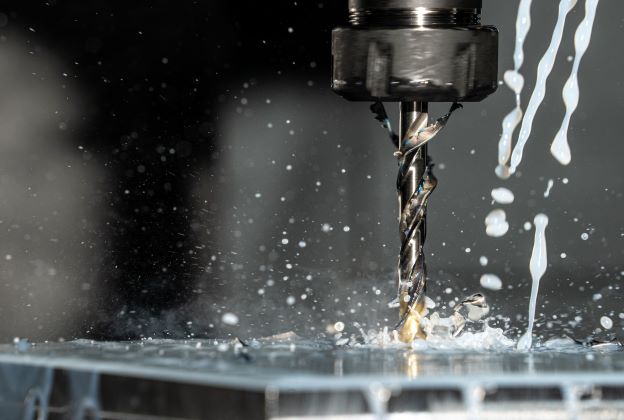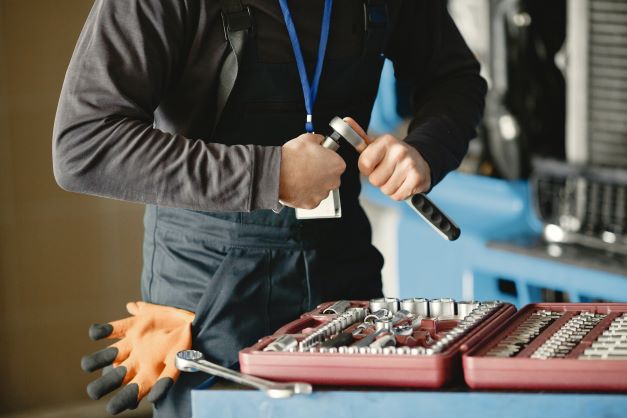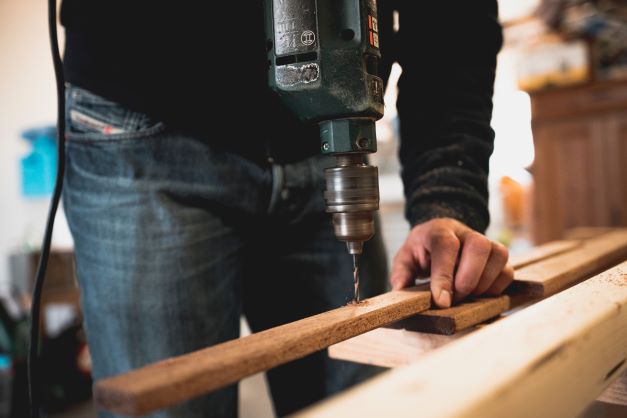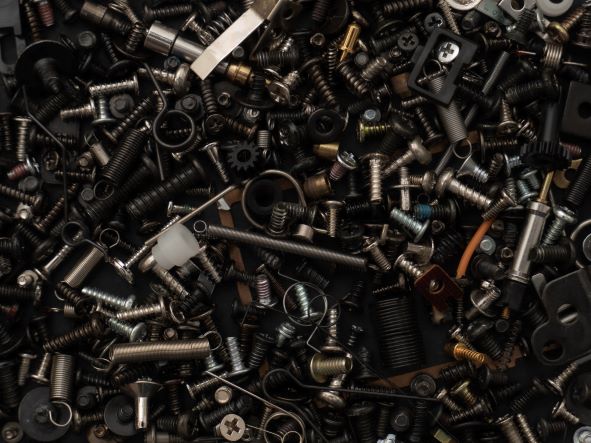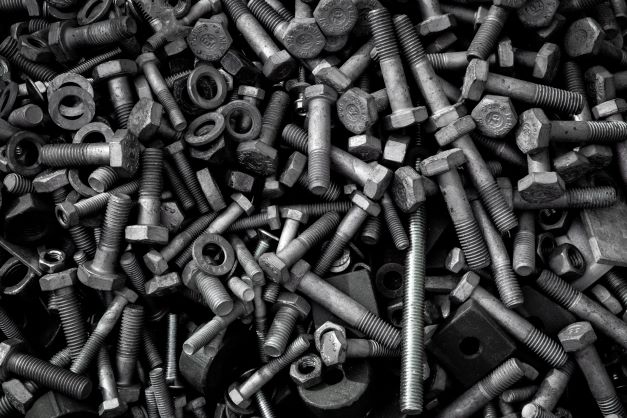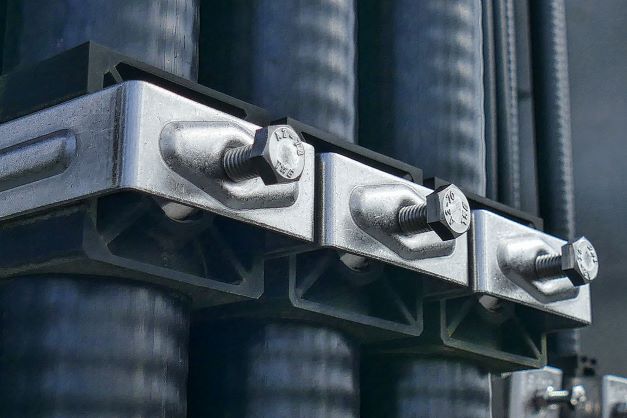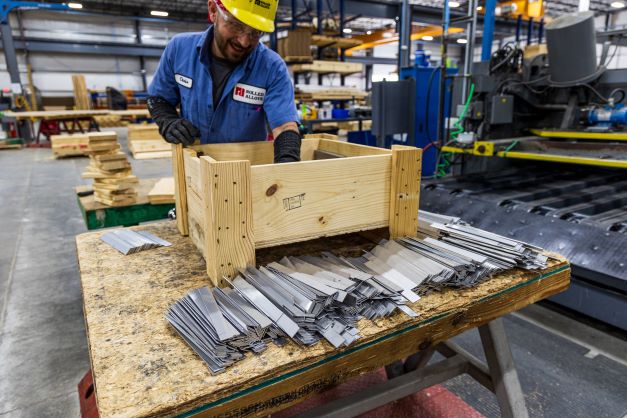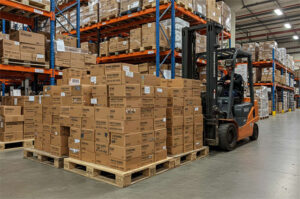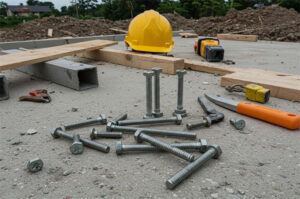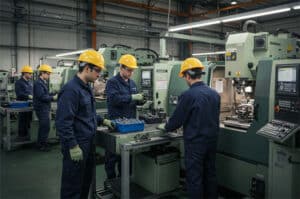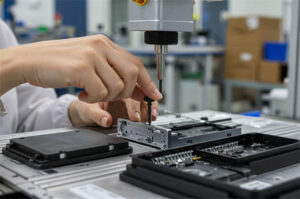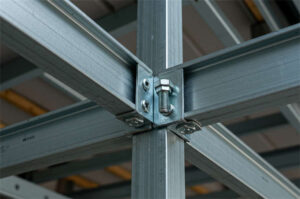What Are Quick Tips and Tricks for Using Fasteners?
Fasteners are great devices that provide many functions and solutions for different kinds of assembly. With its reliable attributes, we as users are responsible to determine the affecting factors in its application. In this article, we will discuss quick tips and tricks for using fasteners. They are general points that will help you go through the work process of easier installation with some important details to keep in mind.
Top 10 Quick Tips and Tricks to Remember When Using Fasteners
-
Always use the right tools
Usually, fasteners require a tooling device during installation. The different types of fasteners go along with different kinds of tools that are suitable in size and shape of the head drive or head and other necessary detail to consider. The use of proper tools is important because it affects the effectiveness of fasteners during the installation or for a long time. Some mishaps while working with the incorrect tool will either result in poor attachment or breakage of the material and surface.
1.1 Fastening tools
Hammer
Mallet
Screwdrivers (Phillips, flathead, Torx)
Wrenches
Hex (Allen) keys
2. Always pre-drill holes on surfaces when needed
Some fasteners were designed to have features of a sharp tip that make the workpiece an easy job and not require pre-drilling. A perfect example of this is self-drilling screws, they provide a particular advantage of greater transition and a drill point cutting bit. In other instances with hard surfaces like hardwood and thick metal, a pre-drilled hole is required before fasteners are tightened into the surface material. This is because without a pre-drilled hole one component might give into a fail. Hardwood is likely to crack or split as a result of installing the screw by force and the screw may break once installed directly on thick metal.
3. The use of fastener lubricants is essential for stainless steel
Stainless steel is one of the primary materials for fasteners because it consists of an invisible coating that makes them less likely to oxidize. However, the coating can also cause friction when two stainless steel fasteners are tightened in an installation like nuts and bolts. During the build-up of heat, the threads on both materials will jam and weld on each other. This action is called galling. To prevent the galling of stainless steel materials it is recommended to use fastener lubricants before installation. It prevents the occurrence of galling and extends the life of a fastener.
4. Never use inappropriate metal elements in crucial environments
Surface environments may contain elements that can corrupt the fasteners. The corrosion of fasteners will depend on the kind of chemical materials present on the surrounding surface. An example of this is saltwater, they are great rust and life-reducing component to fasteners. Stainless steel counters saltwater destructing properties but some grades of stainless steel are also not applicable to this situation. It is recommended to use 316-grade of stainless steel within 20 miles of a saltwater environment.
5. Hot dip galvanized fasteners go together in applications
To have a successful fastening you should always match and mate the same grades and coatings on fasteners. The coating prevents corrosion and enhances the effectiveness of the joining material like hot dip galvanizing, this is a process of coating fasteners in thick zinc making them less susceptible to oxidation. The thick coating on threads allows a protective layer of fastener yet they don’t go well with different coatings, the same goes for the grades of fasteners. To avoid such compatibility issues it’s best to remember this tip.
Know the different processes of manufacturing fasteners and the types of equipment being used. How are fasteners created?
6. Never match the wrong fastener components
This tip goes similar to the previous one, matching different components of fasteners results in the unlikely failure of the substances. The properties found in fasteners can either make up great strength in holding materials or break the compounds of the fasteners and surface. An example of metal materials that don’t go well is stainless steel and aluminum. Each metal has its properties that when used together emit a transfer of electrons that will compromise the integrity of the material such as galvanic corrosion.
What are the different kinds of fasteners?
7. Know the strengths of your metal components
Stainless steel is widely used in fasteners for providing several advantages yet they are considered to be a soft metal. To alter the attributes of materials some processes are operated to enhance and increase their qualities. Stainless steel undergoes heat treatment wherein the material is processed to its temperature limit before it is formed. This method changes the properties of stainless steel to harden and modify them accordingly to its capacity.
8. Don’t partner opposing threads of fasteners
Matching fasteners like nuts and bolts can provide the strength of hold and further benefits of joining materials. During installation when nuts are tightened through threads of bolts they are expected to cause friction and fit together. Eventually, when opposing threads are mixed the results would be damaging both the nut and bolt or jamming them together in unwanted situations.
Hence, the importance of matching the threads of fasteners is one of the priorities to look into in your future projects.
Why should I select the right combination of nuts and bolts?
9. Never over-tighten fasteners
You may think overtightening screws can provide greater hold of materials or that putting more tension in bolts and nuts can lead to better surface grip. No, overtightening fasteners can do more harm than benefit. Fasteners are engineered to have maximum capacities such as recommended torque. To execute a proper installation of fasteners it’s best to use power tools like a torque wrench.
What are nut and bolt fasteners?
10. Don’t compromise your safety, always wear protective gear
In some situations, people may forget to practice the use of protective gear for the safety of installing fasteners. The most important advice that should be implemented in every application of fasteners would be to prioritize safety over anything.
Don’t Be Scammed! How Can You Find Reliable Fastener Suppliers and Manufacturers in China?
Why Do Bolts and Screws Have Different Names?
Bolts and screws are two different fasteners yet they can be used interchangeably. Generally, any fastener device that has a helical form along the portion of its length is a screw. They are classified as the most common fastener that is widely used in holding parts of materials, especially types of wood. Screws have a tapered threaded section that makes them a versatile choice for DIY projects. In contrast, bolts have a constant diameter threading section which is intended for use in holding materials with greater strength and supporting shear loads. Bolts require a mating component such as nuts and washers which gives them unparalleled holding power. They are also preferred in applications to larger industry sectors like infrastructure, machinery, plants, construction, etc.
Bolts Vs. Screws
| Bolts | Screws |
| are Used in critical applications which require features that counteract failure and corrosion, | Preferably used in DIY projects with materials like wood, metal sheets, drywall, and concrete |
| Constant diameter threading section tapered | Tapered threaded section driven |
| Driven with tools like a wrench or torque wrench in installation installed | Installed through surfaces with the use of screwdrivers or drilling tools |
| A type of temporary fastener that can absorb vibrations and shear load from surface applications (ex. Car and truck engines, bridges, railways) | Is also a temporary fastener that is removable from the assembly. (cabinets, furniture, shelves, roofing, and ceiling) |
| Usually consists of the smooth shank and male threads for mating components | Rougher shank and wider threads |
| Is a type of screw that can provide greater holding strength of materials offers | Offers a middle-ground holding power great |
| Great for heavy-duty assemblies | Light to medium construction projects more |
| More expensive materials | Standard use has enabled cheaper costs of screws |
| Requires mating fasteners like nuts and washers to function more effectively | Can be used alone without the aid of nuts and washers |
Why Do Bolts and Nuts Come Loose?
As we know, bolts and nuts are incorporated together as partners in holding joints. The internal (female) threads on nuts should correspond to the external (male) threads of a bolt. In some cases, washers are added in a combination with the two components to help distribute the received load and force in the surrounding. This process enables the resistance of cracking and breakage of the fasteners.
There have been cases of self-loosening and loss of preload in bolts and nuts. When this occurs in assembly it can alter the functionality of bolts leading to undesirable consequences. Bolts are chosen for their qualities to provide strength in hold and durability, the consequences of loose bolts defeat their purpose which is why it is important to prevent it from happening.
The main reasons for loose bolts
To categorize the main reasons for loose bolts, certain instances cover the factors affecting them.
Spontaneous bolt loosening (occurs due to shock, vibration, and dynamic load)
Spontaneous loosening or also referred to as rotational self-loosening is the most common cause of failure in bolts. This instance happens when the bolt rotates from vibration or dynamic load and shock. Eliminating the slip between the joints or at least reducing them to below critical level is one of the best options to prevent bolt loosening. Another method is to increase the friction between the threads of bolts and nuts with the use of fastener lubricant or adhesives. For more secure assembly, a locking wire is also used by the aviation industry.
Slackening (a result of the settlement, creep, and relaxation)
Settlement is considered critical as it happens from the results of dynamic load. Permanent deformation or fatigue over clamped materials and joints increases the stress of dynamic working loads. Creep occurs when fasteners are exposed in long term to high levels of stress beyond the yield strength of materials. It’s severe in high-temperature environments. While relaxation is the restructuring of microstructure in materials when the existing elastic properties are converted into plastic deformation over time.
The key to avoiding the types of fatigue on bolts is good design and high preload on bolts.
The causes of loose bolts
There are certain kinds of pre-determined causes of failure and loosening of bolts.
- Under-tightening
By definition, they are the loose application of bolts making an insufficient clamp force to hold the individual section of the joint together. Under-tightening leads to slippage between sections and places unwanted shear stress and resulting in the bolts eventually breaking.
2. Vibration and shock
Vibrations are transverse movements that cause two sections of joints to move parallel from each other. Nuts and bolts can only tolerate maximum friction from repeated movements before they unwind from mating threads and lose their clamp force.
Shocks are dynamic or alternating loads such as a sudden force applied in the joint. Just a vibration in this repeated sequence can ultimately cause bolt loosening.
3. Embedding
When bolts are poorly designed and are improperly tensioned the embedded joint can lead to loss of clamp force. Micro-embedding of bolts and nuts is a process that allows them to achieve a specific tension.
4. Gasket creep
In a usual assembly of bolted joints, a flexible gasket is inserted between the head and the surface to completely seal the joints against gas or liquid leaks. The gasket also acts as a spring that pushes the pressure in bolts and joint face. Over time with the destructive elements of high heat and corrosive chemicals the gasket may creep (loss of springiness) and cause a loss of clamp force.
5. Differential thermal expansion
When the materials of the bolts and surface do not correspond to each other and the difference causes thermal issues due to environmental issues and changes or industrial processes. Making the bolts expand to rapid contact of loosening.
Some quick enhancements to avoid loose bolts
The occurrence of loose bolts causes the destruction of materials in projects and safety problems. Therefore, further enhancements of bolt assembly are taken in innovation by professionals to provide solutions to undesirable situations.
- Washers
Washers are a type of fastener that has a circular shape and a hole in the middle. They are useful tools in bolted joints because they distribute the load on the surrounding surface. It also features locking systems that secure the slip area and grip of nuts and bolts. Washers have different types and functionality according to the extra friction it provides and the amount of clamp force it maintains.
2. Mechanical devices
such as castellated nuts, tab washers, and locking fasteners help in preventing loose bolts by tightening the nut into the place of a bolted joint.
3. Prevailing torque nuts
Generally called lock nuts, they are nylon or metal insert inside a nut that adds friction to the assembly.
4. Double nuts
This idea is another type of locking system that refers to doubling the application of nuts in different sizes. The locking nut is considered to be smaller and able to tighten the grip of the primary bigger nut.
5. Adhesives
Liquid adhesives, coatings, or solid adhesive patches are all categories to ensure the tightness and prevention of loose bolts. They are great after the process of installation but yet, situational to the factors that can be met in certain applications.
High-tensile fasteners
Tensile strength is a particular feature of fasteners that enables the successful performance of bolts and nuts. They are usually the modification of quality in the strength of the fastener. They can be measured in tensile testing or determining the tensile stress capacity.
Preloading bolts and nuts
Preloading is simply the process of determining the capacity of bolts in receiving load, stress, force, and others. This method also proposes further benefits and advantages to fastening materials.
Read the article >> What are high-tensile fasteners?
A subtle figure of topics in the article
|
High-Tensile Fasteners The Typical Tensile Strength of Fastener Materials Tensile Stress VS. Tensile Strength Benefits of High-Tensile Qualities The Application Industries of High-Tensile Fasteners How Do You Pre-tension Bolts/Fasteners and Why Are They Required? Simpler Ways to Determine the Preloaded Bolts Fasteners Preloaded vs Non-preloaded Fasteners The measures of variables affecting the torque and tension in fasteners Analysis of the Modes of Failures in Bolting Locking Mechanisms in Bolted Joints What Professions and Industries Use Fasteners? |
FAQs About Fasteners And Fastener Suppliers
1. What is another word for fasteners?
In general, fasteners are mechanical devices that join and hold objects together. Fasteners have different types according to their specific purpose and function. Other terms used for fasteners include fastening, pins, rivets, buckles, clasps, screws, bolts, etc.
2. What are the categories of fasteners?
The broad category of fasteners is distinguished into two elements; permanent and temporary or non-permanent fasteners.
Permanent fasteners are engineered to last longer and are intended for single use. The types of fasteners that fall under this category are rivets, nails, and welds.
Non-permanent or temporary fasteners are preferable in many applications due to their removable feature, allowing users to dismantle or change the fastening without the possibility of permanent damage to products and materials. Common examples are screws, bolts, nuts, washers, and studs.
3. What are fasteners made of?
Fasteners are mainly made of metal. Metal has a diverse range of types and elements that can be modified accordingly to meet the required quality. The common materials used in the production of fasteners are types of metal in stainless steel, carbon steel, aluminum, alloy, brass, bronze, etc., and sometimes even with a plastic component such as nylon.
4. What are basic examples of fasteners?
The basic examples of fasteners include screws (general and standard type), bolts, nuts, washers, nails, rivets, and studs. They are classified according to their attributes such as threaded fasteners and unthreaded ones. If you don’t know which classification the types of fasteners fall into you should read our blog; what are different kinds of fasteners?
5. Where are fasteners used?
Most products and structures in the world consist of fastening solutions. It takes a closer realization to notice the availability of use of fasteners in many situations. From large industries of spacecraft, buildings, bridges, railways, docks, ships, machines, and engines, to smaller sectors of household appliances, radio, cellphones, toys, garments, and many more.
6. Where can I buy fasteners?
There is a massive market for fasteners, they can be available from anywhere because of the demand that never ceases. Many fastener manufacturers have a range of distribution areas around the globe. They are more likely to be found near you and if not finding a reliable fastener supplier is the next step to meet your needs.
7. Are there fastener suppliers and manufacturers?
Yes, the global industry is flooded by fastener suppliers and manufacturers at once. An unending list of these companies can be found in China. They are one of the leading manufacturers distributing fasteners from anywhere in the world. To know the list of reliable sources checks our article about it. Top 10 Fastener Suppliers and Manufacturers in China
8. How do you use fasteners?
With the variations of types of fasteners, there are numerous ways of installing their kinds with the use of specific tools. The tools mostly used in fasteners are hammers, wrenches, screwdrivers, Allen keys, etc. And installation process may vary from pounding, punching, insertion, drilling, torque, and another related usage.
9. Can you use fasteners in wood?
Wood is a common surface material that fasteners work with, there are also types of wood surfaces that require different functions of fastening. Wood screws are usually the fasteners encouraged in the use of woodwork. There are also instances of wood-to-metals and metal sheets applications that require particular components to withstand types of corrosion in the surrounding environment.
10. What are stainless steel bolts?
Stainless steel bolts are fasteners with stronger quality in holding objects together. This type of metal proposes many advantages in features that are recommended in critical applications such as the use of large industries in water piping, waste management, chemical plants, on-shore and offshore plants, etc.
